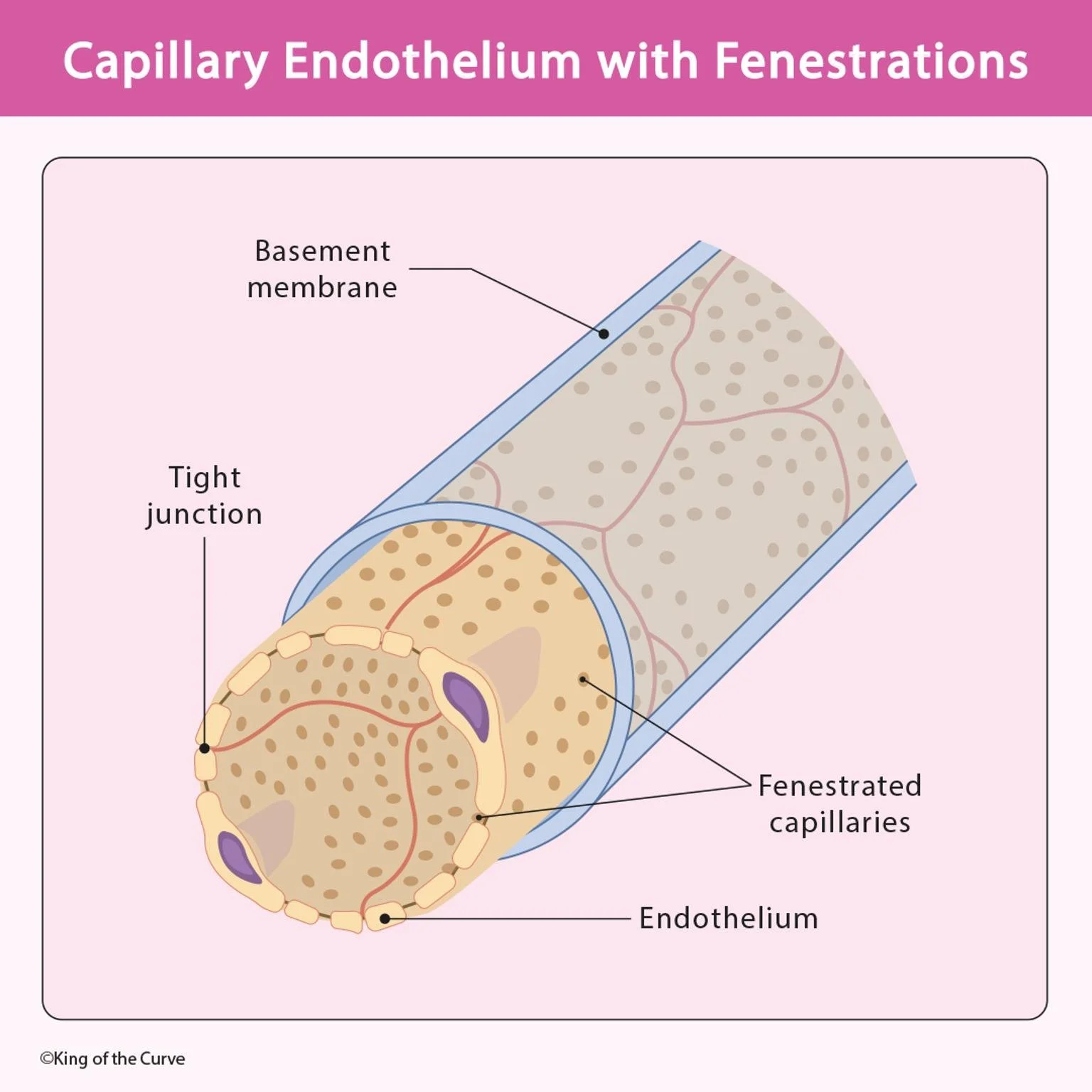🩸 Capillary Endothelium with Fenestrations: Structure & Function
Capillaries are the smallest blood vessels in the body, designed for the exchange of nutrients, gases, and waste products between the blood and tissues. Among the different types, fenestrated capillaries are specialized to allow a high rate of exchange while still maintaining selectivity. Their fenestrations (small pores) make them crucial in organs where filtration or rapid exchange is essential.
🧪 Structure of Fenestrated Capillaries
Fenestrated capillaries have unique anatomical features:
Endothelium: A single layer of flattened endothelial cells lining the vessel.
Fenestrations: Small pores that increase permeability to water and small solutes, while still restricting larger molecules.
Tight Junctions: Hold endothelial cells together, regulating what passes between cells.
Basement Membrane: A thin extracellular layer that provides structural support and an additional filtration barrier.
These structures work together to ensure efficient yet controlled exchange between the blood and surrounding tissues.
📊 Comparison of Capillary Types
| Feature | Continuous Capillaries | Fenestrated Capillaries | Sinusoidal Capillaries |
|---|---|---|---|
| Endothelium | Continuous with tight junctions | Has pores (fenestrations) | Large gaps between endothelial cells |
| Permeability | Low | Moderate (allows small molecules, water) | High (allows proteins and cells) |
| Location | Skin, muscle, lungs | Kidneys, small intestine, endocrine glands | Liver, spleen, bone marrow |
| Function | Restricts most molecules | Rapid exchange of small solutes and fluids | Exchange of large molecules and cells |
💡 MCAT Tip: Recognizing where each type is found and what they allow through is a common histology question.
🩺 Where Are Fenestrated Capillaries Found?
You’ll commonly find fenestrated capillaries in:
Kidneys — for rapid filtration of blood during urine formation.
Small intestine — for absorbing nutrients into the bloodstream.
Endocrine glands — to allow hormones to enter circulation quickly.
💡 MCAT Insight: Expect questions connecting capillary type to function and organ location. For example, glomerular capillaries in the kidney are fenestrated to filter plasma but retain blood cells and proteins.
🧠 NCLEX Connection
Nursing students should understand how capillary structure changes in disease. For example:
Diabetes mellitus can damage basement membranes, altering permeability.
Sepsis may disrupt tight junctions, causing leakage and edema.
🚀 How KOTC Helps You Master Histology
With over 100,000 downloads, King of the Curve offers:
Adaptive Q-Bank with histology and physiology questions.
Daily quizzes to reinforce knowledge.
Visual-based learning for better long-term recall.
Frequently Asked Questions (FAQs)
-
Aim for 4-6 focused hours, ensuring you incorporate breaks to avoid burnout.
-
Practice mindfulness techniques, take practice exams under realistic conditions, and maintain a balanced lifestyle.
-
Set short-term goals, seek support from mentors, and reward yourself for small achievements.
-
Regular exercise improves focus, reduces stress, and enhances overall mental clarity.
-
KOTC offers personalized learning tools, gamification features, and adaptive question banks to help students stay on track without burnout.


